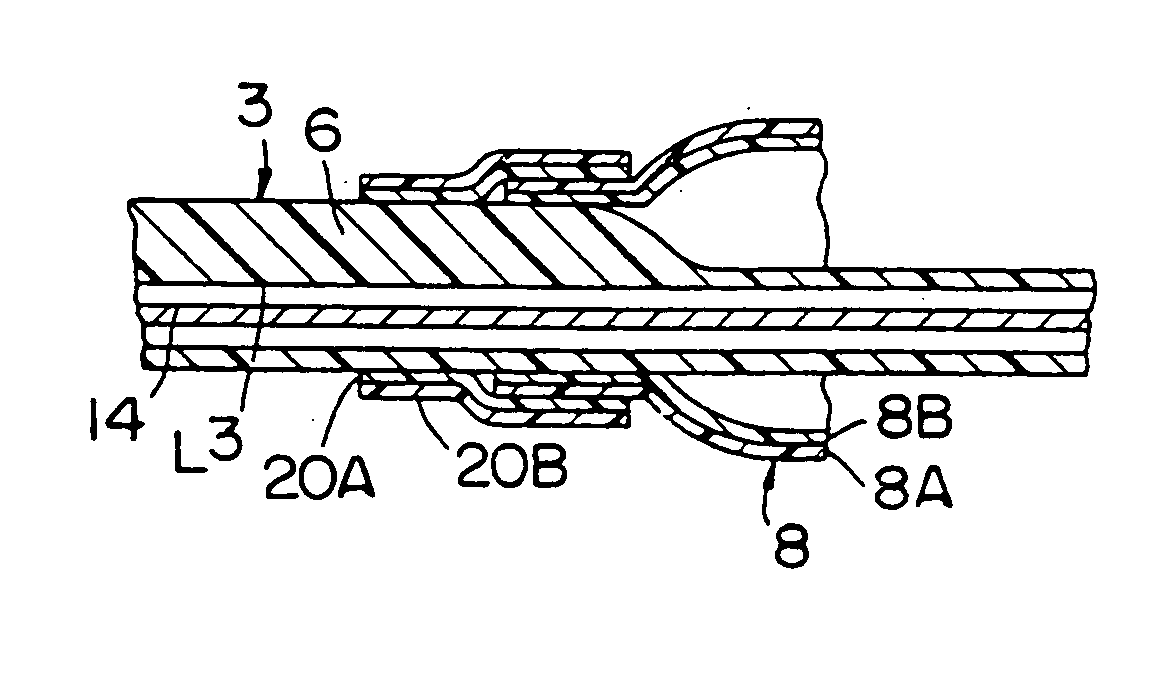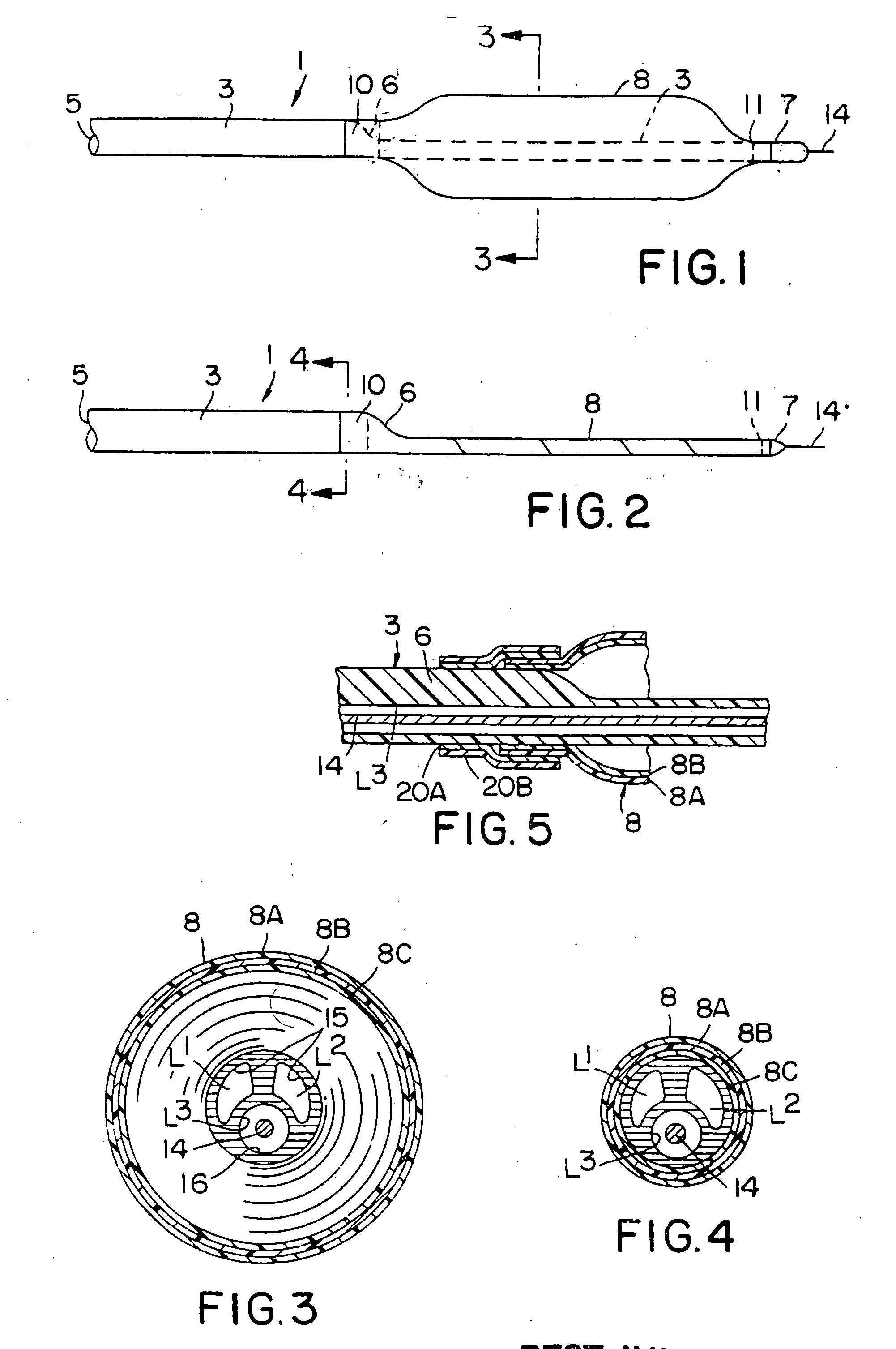Co-extruded medical balloon
a balloon and balloon body technology, applied in the field of balloons for medical devices, can solve the problems of poor pin hole resistance of polyethylene terapthalate, difficult to pass through tight lesions only with great difficulty, and thicken the catheter, so as to reduce the formation of pin holes, and the effect of softer feel
- Summary
- Abstract
- Description
- Claims
- Application Information
AI Technical Summary
Benefits of technology
Problems solved by technology
Method used
Image
Examples
Embodiment Construction
[0018] An illustrative catheter 1 is shown in FIGS. 1 and 2. Catheter 1 includes a catheter tube 3 having a proximal end 5, a distal end 6 and a tip 7. A distended coextruded medical balloon 8 of the present invention is shown in FIG. 1 secured to the outside of the distal end 6 and the tip 7, the co-extrusion being critical to the present invention. The interior of the balloon 8 is in communication with at least one lumen (not shown in this Figure) of the catheter tube 3. To form the tip 7 (and the portion of the catheter between the distal end 6 and the tip 7 to support the balloon 8) a portion of the catheter tube 3 is cut away so that only the lumen that houses an internal guide wire 14 remains (as shown in dotted lines within the balloon 8).
[0019] Extending through the interior of the tube 3 are a plurality of lumens (shown in FIGS. 3 and 4) which can serve a variety of functions, for example, housing the guide wire 14, inserting materials into the blood stream or inflating or...
PUM
| Property | Measurement | Unit |
|---|---|---|
| Current | aaaaa | aaaaa |
| Digital information | aaaaa | aaaaa |
Abstract
Description
Claims
Application Information
 Login to View More
Login to View More - R&D
- Intellectual Property
- Life Sciences
- Materials
- Tech Scout
- Unparalleled Data Quality
- Higher Quality Content
- 60% Fewer Hallucinations
Browse by: Latest US Patents, China's latest patents, Technical Efficacy Thesaurus, Application Domain, Technology Topic, Popular Technical Reports.
© 2025 PatSnap. All rights reserved.Legal|Privacy policy|Modern Slavery Act Transparency Statement|Sitemap|About US| Contact US: help@patsnap.com


